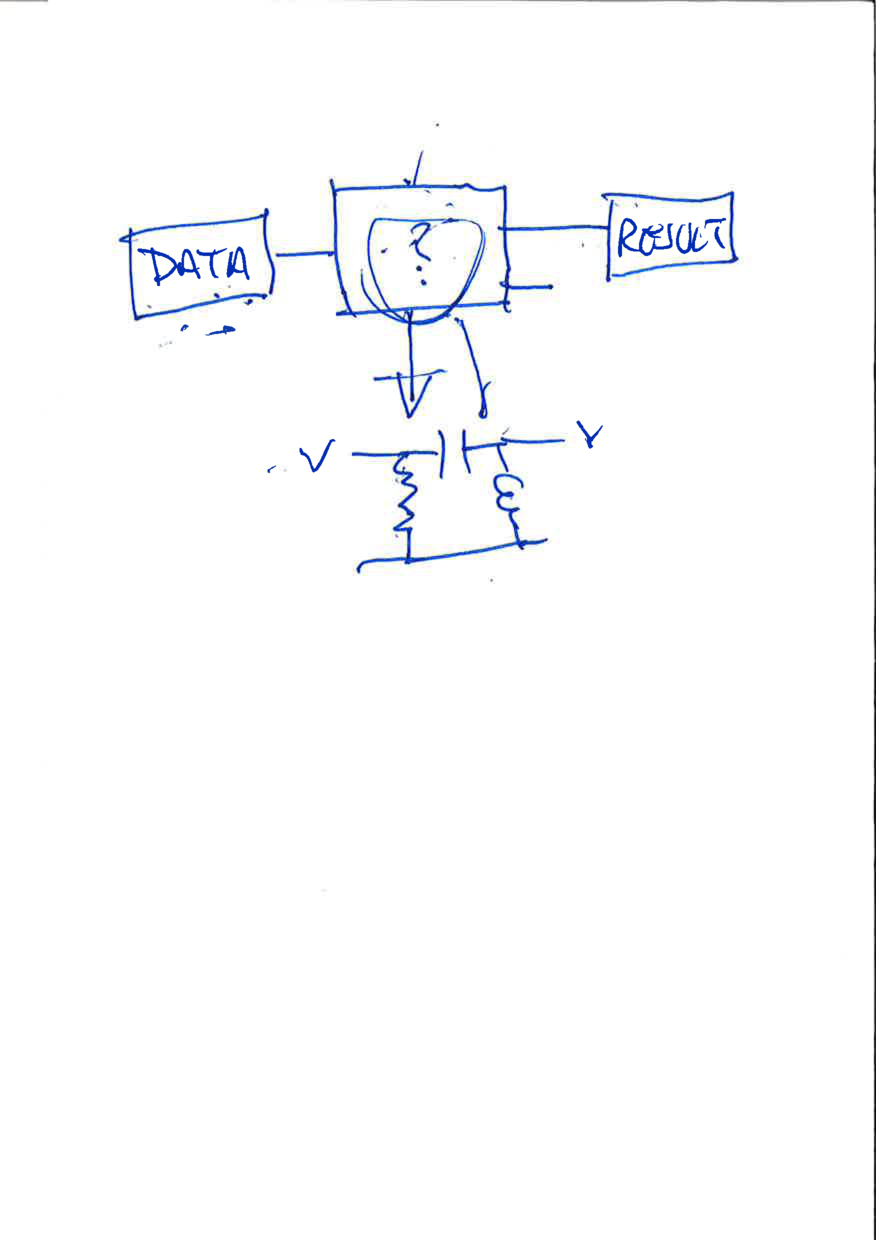An algorithm, drawn by a 65-year-old male retired electrical engineer in the US.

And if we turn, I'll turn the sheet over and could you just draw please what, how an algorithm works and if you even want to just talk through your drawing as you're doing it, you're welcome to. Okay. [pause] I think an algorithm is a black box and you feed in data, and then you would obtain the result, and then the nature of the algorithm of course is dependent on what you're trying to represent. So for example, if you are trying to represent an electrical circuit, the algorithm would become mathematical representation of say a bunch of resistors and capacitors and inductors. And you might, your input might be a voltage and your output might be another voltage. And then it would be, this mathematical representation would be a representation of this physical structure, but it could just as easily be, represent chemical, a chemical situation. So you might have various molecules or compounds, and they're quantities, and then you would have a mathematical relationship that would then produce a result that would represent a chemical reaction. Okay. Okay. And where did you learn about algorithms or how do you know about them? A combination of early mathematics and computer science. So probably most often used with computer science. Okay. All right. Thank you so much. Sure.